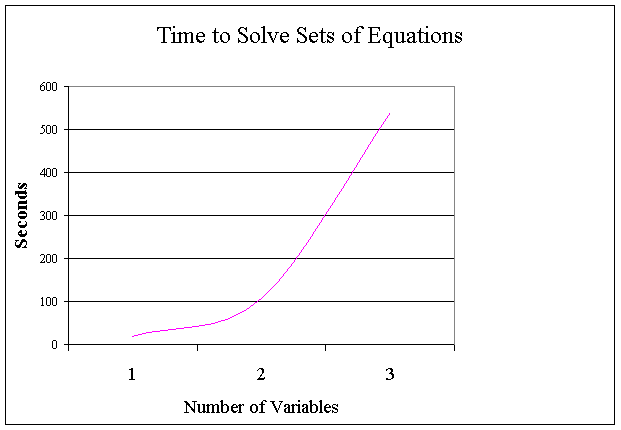2x - 2y + 5z = 8
x - 3y + 2z = 4
3x + 7y + 5z = 8.
The solutions are x = 9/5, y = - 1/5, z = 4/5 and, after I corrected some simple errors in addition, it took about 9 minutes to get the solutions. To the right is a plot of the number of variables vs. the time it took to solve for them. You can extrapolate to the case of more variables. Clearly, here's a case where a computer would come in handy. If the number of variables becomes large, computers become necessary. Do such large arrays of equations show up? Yes, indeed. In the calculation of nuclear properties, for example, the number of variables can easily be in the thousands.
Notice that's not really hard to solve the equations, it's just time consuming (and boring). Computers never get bored. Also note another valuable use of computers - they allow you to draw nice pictures!
